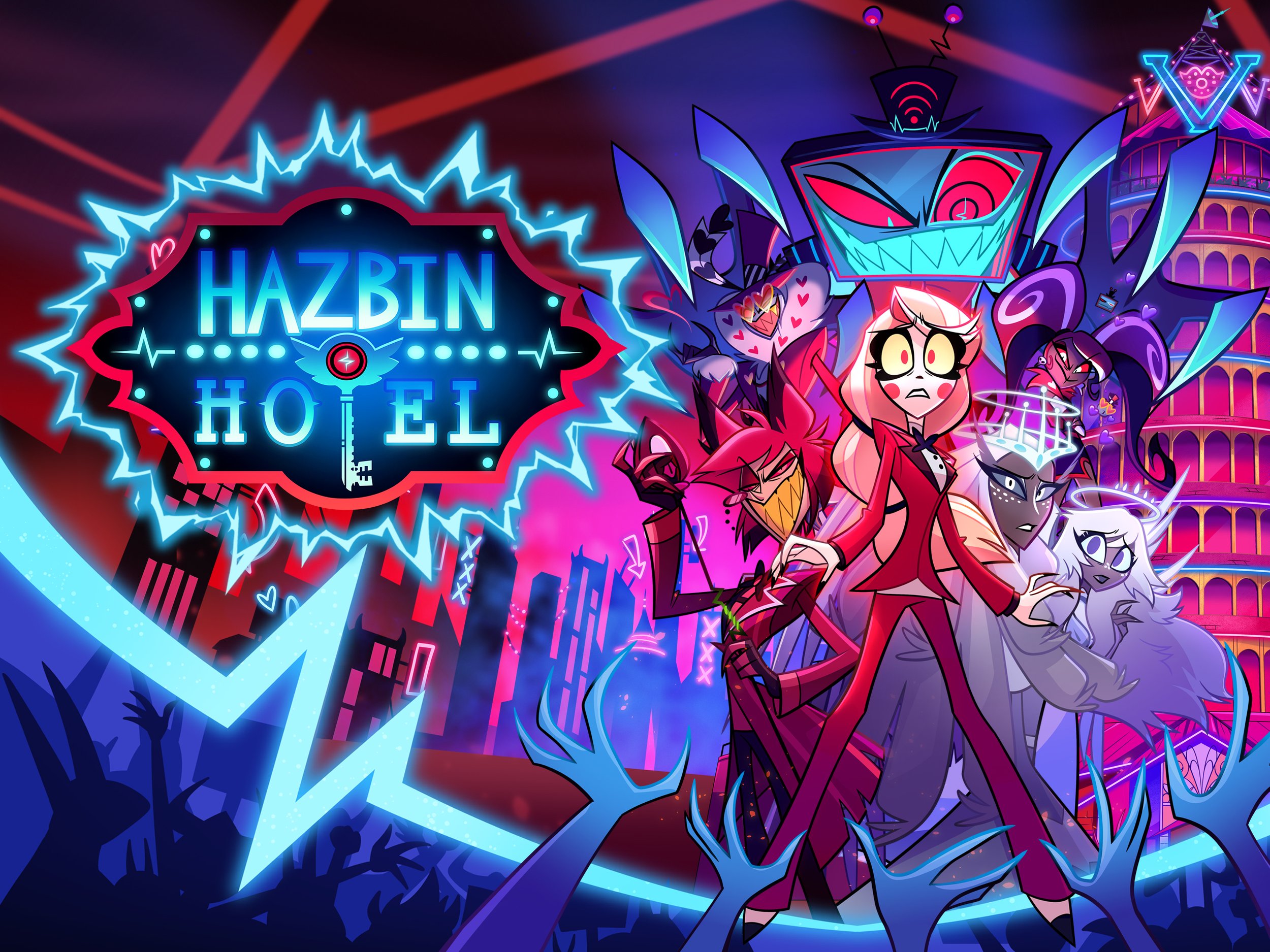Dancing in the Shadow of Ignorance: Peacemaker, Fortnite, and the Psychology of Unseen Symbols
Spoilers ahead for Peacemaker season 2
When Epic Games released the “Peaceful Hips” emote in Fortnite, a seemingly harmless cosmetic add-on linked to the HBO Max series Peacemaker, the move was designed as another example of cross-promotional synergy. Fortnite has become a sprawling pop-cultural nexus where superheroes, rappers, athletes, and film icons can coexist, and the addition of John Cena’s Peacemaker fit perfectly into that tradition. The emote itself was a recreation of the first few seconds of the Season 2 opening credits sequence, where Peacemaker, with his usual mixture of absurd seriousness and swagger, performs a deliberately silly dance. For several weeks, the emote was little more than a novelty, a digital toy for players to express themselves in one of the world’s most popular games.
Yet when Peacemaker Season 2 reached its shocking mid-season twist in episode six, “Ignorance Is Chris,” the dance suddenly took on a far darker meaning. The revelation that the world Peacemaker inhabited was in fact a Nazi-dominated alternate reality reframed the choreography entirely. What once seemed goofy now appeared charged with sinister undertones. Players, many of whom had spent hours gleefully repeating the emote, suddenly found themselves implicated in an act that could be interpreted as tracing fascist symbolism.
Epic responded quickly. On September 28, the company disabled the emote and announced refunds, stating it was seeking clarification from its partners about the creative intentions behind the dance. Days later, Epic clarified that no sinister intent was behind the move, yet nonetheless promised to rework the animation to avoid any confusion. The “Peaceful Hips” emote may return, albeit in modified form.
At first glance, this looked like a straightforward case of a corporation overcorrecting to avoid controversy. But a closer examination reveals something far more profound. The intertwining of Peacemaker’s narrative with Fortnite’s global stage created an accidental but brilliant mirror. It held up a reflection of how easily ordinary people can perform rituals and gestures without recognizing the deeper currents of meaning that may flow beneath them. The fact that this unfolded in 2025, amid a political climate defined by the resurgence of authoritarian movements and the very real possibility of Donald Trump consolidating dictatorial power, makes the incident more than a pop-cultural curiosity. It becomes a commentary on complicity, blindness, and the psychology of symbols in a world teetering on the edge of democratic collapse.
This article will explore the chain of events surrounding the emote, the thematic significance of Peacemaker’s twist, the psychological dimensions of ignorance and ritual, and the cultural resonance of this controversy in our political moment. In doing so, it will argue that what appeared as an unfortunate coincidence may actually be one of the most insightful and unintentional acts of transmedia storytelling in recent years.
The Sequence of Events
To understand why this incident resonated so powerfully, one must first examine the precise timeline.
In August 2025, Epic Games released a Peacemaker cosmetic set in Fortnite to coincide with the Season 2 premiere of the show. The centerpiece was the “Peaceful Hips” emote, a brief dance animation that replicated Peacemaker’s movements in the opening credits. The dance, set in the show to Foxy Shazam’s “Oh Lord,” carried the same surreal energy as Season 1’s infamous “Do Ya Wanna Taste It” intro. The appeal lay in its deliberate awkwardness, performed with utter seriousness, a gag that worked precisely because it was never treated as a gag by the characters.
For weeks, players used the emote without controversy. Then came episode six, “Ignorance Is Chris.” In this chapter, audiences discovered that the world around Peacemaker was not the familiar America but an alternate version in which the Nazis had won World War II. The American flag displayed swastikas instead of stars. The institutions around Peacemaker were revealed as authoritarian constructs. And suddenly, the opening dance, with its exaggerated arm movements and pelvic thrusts, could be reinterpreted as echoing fascist gestures.
Critics and fans quickly drew parallels to Disney’s wartime propaganda short Der Fuehrer’s Face, where Donald Duck’s frantic movements eventually traced the shape of a swastika. The visual similarity, combined with the shocking narrative revelation, generated a wave of discourse. Was the dance intentionally coded? Was it an elaborate satirical trick by James Gunn, designed to expose audience complicity?
Epic, did not wait for the discourse to settle. Within days, the company pulled the emote, citing the need to “inquire into our partner’s creative intentions.” They refunded players and promised to return the emote in a modified form. Later statements clarified that Warner Bros. Games and Gunn had not intended the dance to carry any Nazi connotations. Yet, in an effort to avoid misinterpretation, Epic will most likely rework the choreography before re-releasing it.
This rapid escalation, from harmless dance to disabled emote, highlighted how the meaning of a cultural artifact can shift overnight when reframed by narrative revelation. It also illuminated how fragile symbolic play can become in a politically charged era.
Ignorance in the World of Peacemaker
The genius of Peacemaker as a series lies in its ability to oscillate between crude comedy and sharp political satire. The character of Christopher Smith, aka Peacemaker, is a walking contradiction: a man who professes love of peace while killing indiscriminately, a jingoist who claims to uphold freedom while embodying toxic patriotism, a deeply broken son scarred by an abusive father who was himself a white supremacist.
In Season 2, Gunn elevated this satire by constructing an entire alternate reality built on fascist foundations. What makes the twist compelling is that Peacemaker himself remains oblivious for so long. He dances, he fights, he interacts with institutions and people, never questioning the symbols that surround him. His ignorance is not portrayed as malicious but as tragicomic blindness. He cannot see the swastikas for what they are because his worldview is limited, shaped by trauma and self-delusion.
The title of episode six, “Ignorance Is Chris,” hammers this point home. The entire thematic crux is that Peacemaker’s lack of awareness is itself a kind of complicity. The audience, too, shares in this complicity, because for five episodes they laughed at the dance, admired the absurd commitment of the cast, and reveled in the spectacle without realizing what it foreshadowed. When the reveal comes, viewers are forced to retroactively reassess their own enjoyment. They had been blind just like Chris.
The Fortnite Mirror
Here is where the story becomes uncanny. By importing the dance into Fortnite, Epic Games unwittingly extended this blindness into the real world. Millions of players used the “Peaceful Hips” emote without seeing anything sinister. It was silly, fun, and entirely uncontroversial. But once the twist aired, their past actions could be reframed. Suddenly, the players too had been “dancing in ignorance.”
This accidental mirroring is what makes the entire episode fascinating. Peacemaker was already designed to make audiences complicit in its satire, but the Fortnite emote scaled that complicity across a global audience of gamers. People who may never have watched the show still became participants in the blind dance, embodying the very theme Gunn had woven into his narrative.
Epic’s decision to pull the emote further amplified the resonance. The act of disabling it was a tacit acknowledgment that symbolic gestures cannot remain neutral once they are reframed. What was once harmless can be interpreted as harmful when context shifts. This fluidity of meaning is precisely what Gunn dramatizes in Peacemaker, and Fortnite’s intervention became part of the same text.
The Psychology of Symbols and Ignorance
To grasp why the emote controversy resonated so intensely, it is necessary to turn to psychology and the study of symbols. Symbols are not fixed; they are dynamic vessels whose meaning depends on context, culture, and time. The swastika exemplifies this volatility. For centuries it was revered across Hinduism, Buddhism, and Jainism as an emblem of cosmic harmony and good fortune. Yet the Nazi regime’s appropriation of the symbol in the twentieth century transformed it into one of the most toxic emblems of hatred. Its geometric design did not change, but its cultural meaning shifted entirely, infused with the trauma of genocide and war. The swastika is a vivid reminder that symbols are never merely abstract shapes, but repositories of collective memory and affect.
Gestures and dances operate in the same way. A raised arm can signify greeting, surrender, or allegiance depending on context. A rhythmic movement can be playful or political, innocuous or subversive. In Peacemaker, the Season 2 dance sequence appears absurd and harmless until the narrative twist reframes it. Once viewers recognize that the setting is a Nazi-dominated world, the choreography acquires sinister connotations. Fortnite’s “Peaceful Hips” emote underwent the same transformation. For weeks, it was simply another quirky animation. Only after the show’s revelation did players recognize the possibility of darker resonances. The act itself did not change; the interpretive frame around it did.
Psychologists have long examined the mechanisms through which individuals adopt behaviors and symbols without interrogating their meaning. One relevant concept is “pluralistic ignorance,” in which people conform to behaviors or rituals they privately do not understand or endorse, because they assume others accept them. This phenomenon explains how groups can perpetuate traditions or norms that few participants actively believe in, but all continue because no one wishes to stand apart. In authoritarian contexts, this dynamic becomes especially dangerous. Rituals of loyalty, symbolic gestures of obedience, and state-orchestrated spectacles thrive precisely because individuals perform them mechanically, without reflection, fearing the consequences of dissent.
The Fortnite controversy represents a benign but instructive version of this psychological pattern. Players used the emote because it was available, fun, and socially validated. Few asked what the dance meant, and fewer still considered its possible symbolic associations. It was only when new narrative information reframed the gesture that players recognized they had been performing something that could be read as sinister. This sudden shift illuminates how ignorance and complicity function: people often do not examine the meanings of the rituals they participate in until forced by new context.
Another concept that deepens this analysis is “cognitive dissonance,” the discomfort experienced when one’s actions come into conflict with new information or values. When players discovered that their harmless emote might echo fascist imagery, they faced a moment of dissonance. The fun they had enjoyed clashed with the darker associations now visible. Some resolved the tension by dismissing the concern, while others embraced Epic’s decision to pull the emote as a way of restoring symbolic safety. The rapid spread of memes, jokes, and debates across social media in response to the controversy demonstrates the collective attempt to reduce dissonance by reframing or reinterpreting the dance.
Equally relevant is the psychology of “symbolic interactionism,” a framework from sociology that emphasizes how meaning is constructed through social interaction. According to this view, the emote had no fixed significance until communities of players, critics, and developers began negotiating what it represented. The act of Epic disabling the emote was itself a symbolic gesture, one that signaled a redefinition of meaning: the emote could no longer circulate in its original form because its symbolic potential had become unstable. In this sense, Fortnite became a live laboratory for studying how symbols acquire, lose, and regain legitimacy in real time.
Finally, from the perspective of authoritarian psychology, the entire episode illustrates how easily populations can be habituated into rituals that appear harmless but mask deeper currents. Scholars of fascism have long noted that authoritarian movements rely not only on explicit propaganda but also on everyday rituals, songs, salutes, and performances that normalize obedience and unify populations through shared symbolic acts. Most participants do not consciously analyze these gestures; they simply repeat them because everyone else does. The Fortnite emote, performed blindly by millions, offers a striking parallel. It was a rehearsal, albeit unintentional, of the way mass rituals can be adopted without scrutiny, their meaning revealed only in hindsight.
In sum, the emote controversy serves as more than a minor media spectacle. It is a case study in how symbols are constructed, how ignorance sustains rituals, and how context transforms interpretation. It illustrates pluralistic ignorance, cognitive dissonance, symbolic interactionism, and the psychology of authoritarian ritual all at once. The players who danced without awareness found themselves in the same position as Peacemaker himself: complicit through ignorance, enacting a gesture whose full meaning they could not yet see.
Political Resonance in 2025
All of this would be compelling enough in the abstract, but it lands with even greater force in the current political climate. In 2025, the United States faces the real prospect of authoritarian consolidation under Donald Trump. His rhetoric has grown increasingly radical, invoking “retribution” against enemies, questioning the legitimacy of elections, and signaling alignment with far-right movements. Around the world, similar strongmen rise to power by normalizing extremist symbols and narratives.
In such a climate, the Peacemaker twist feels less like comic-book fantasy and more like allegory. The idea of an America where Nazi symbols dominate no longer feels remote, but disturbingly plausible. The character of Peacemaker, oblivious to the authoritarian order around him, becomes a mirror for ordinary citizens who may fail to recognize creeping fascism in their own society.
The Fortnite emote intensifies this allegory by demonstrating how masses of people can uncritically repeat rituals without recognizing their deeper connotations. It is not difficult to imagine real-world parallels, where patriotic displays, chants at rallies, or seemingly harmless cultural performances become infused with authoritarian meaning. The Fortnite controversy is a safe, digital rehearsal of the same dynamics that play out with higher stakes in politics.
Transmedia Commentary
One might ask whether this was intentional. Did James Gunn, Warner Bros., or Epic Games design the emote controversy as a piece of transmedia storytelling? The official answer is no. Epic has been explicit that there was no intent to tie the emote to the Nazi twist. Yet the power of art often lies not in intent but in reception.
From a media studies perspective, what happened here can be read as accidental transmedia commentary. Peacemaker sets up a theme of ignorance and complicity. Fortnite, by importing the dance, extends that theme into an entirely new medium. The audience becomes participants, and when context shifts, they too are caught in the web of complicity. Whether or not anyone planned it, the result is a multi-platform narrative that dramatizes the psychology of symbols across television and gaming.
This is not the first time that cross-media storytelling has produced unexpected resonance. Yet it is rare for the resonance to align so perfectly with the central themes of the source material. The fact that it unfolded organically makes it all the more powerful.
Simply Put
The saga of the “Peaceful Hips” emote is more than a quirky footnote in the history of Fortnite collaborations. It is a parable about blindness, complicity, and the fluidity of symbols. By dancing without awareness, both Peacemaker and Fortnite players enacted the same ritual of ignorance. By pulling the emote, Epic underscored how swiftly meanings can shift when context changes. With all this happening in 2025, amid the specter of authoritarianism in the United States and abroad, Gunn’s satire and Epic’s response together created a mirror for society itself.
What begins as comedy ends as commentary. What begins as a goofy dance becomes a study in the psychology of symbols. And what begins as harmless fun reveals itself as a lesson in the dangers of ignorance.
We may laugh at Peacemaker’s obliviousness, and we may chuckle at players caught performing an accidentally sinister dance. Yet beneath the laughter lies a warning. In times of political upheaval, ignorance is not innocence. It is complicity. The dances we perform, the rituals we repeat, and the symbols we ignore all shape the societies we inhabit. To dance blindly in the shadow of fascism is to risk becoming its partner.
In that sense, the emote controversy is not just a pop-cultural oddity. It is a brilliantly apt reflection of our precarious political moment. By holding up this mirror, however accidentally, Peacemaker and Fortnite remind us that the line between harmless ritual and dangerous complicity is thinner than we think. And in an age where democracy trembles, that is a lesson we cannot afford to ignore.








